Blue Earth Alliance: Jacob Maentz: Project Katutubong Pilipino
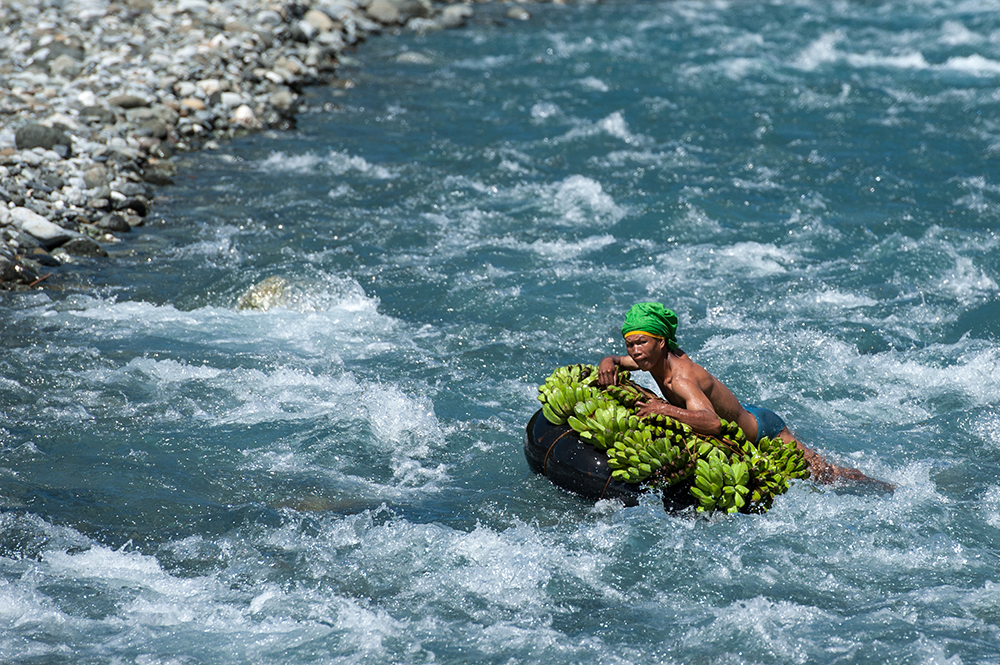
©Jacob Maentz, Every weekend many of the Bangon Mangyans harvest their excess produce and transport it to the lowlands to be sold. Many of the crops come from far up in the mountains, so floating everything down the river is the best way to transport it. Large tire tubes are used to float bananas and other produce down the river to be sold in the lowlands. Everything from ginger, bananas, coconuts, sweet potatoes, ube, and even charcoal come into town to be sold. Everyone helps transport goods into town, including children. Many Mangyan do not get a fair price for their goods, but are typically forced to sell them anyway. Tribe members will acquire small amounts of debt during the week from lowlanders when they buy rice or other products from their stores in town. Because they have this debt they are obligated to sell their products at a very low price. (Oriental Mindoro, Philippines)
Jacob Maentz’s long-term project documenting indigenous cultures in the Philippines demonstrates the care and commitment contemporary audiences expect from photographers who are creating work about communities other than their own. His images give us a reverent glimpse into the daily lives of his subjects, and offer viewers an opportunity to learn about—and learn from—people who are navigating a rapidly changing world while working to preserve their heritage and way of life. – Blue Earth Alliance
Jacob Maentz (b. 1979) is an American travel and documentary photographer currently based in Cebu City, Philippines. His passion lies in creating images that communicate a strong sense of place and cultural awareness in unique, challenging situations. His photographs often reflect his background in conservation, and explore issues related to the human condition and natural world.
Jacob is a contributing photographer at Getty Images. His images have been published world-wide by media outlets including Discovery Channel Magazine, National Geographic Traveler, Asian Geographic, Condé Nast, Lonely Planet, The Telegraph, and The Guardian. He has been commissioned by Fortune 500 companies, private organizations, non-government organizations, book publishers and universities, and he writes photography tutorials for different online outlets and conducts group photography workshops.
In 2013, Jacob was awarded the Grand Prize for PhotoShelter’s Jumpstart your Photography Business initiative and was shortlisted for the American Photographic Artists (APA) / Lucie Foundation Scholarship for his work with Filipino indigenous groups. Jacob was awarded as the Second Place Finalist in the prestigious 2014/2015 Photocrati Fund (now Imagely Fund) and became a finalist in the 2016 Travel Photographer of the Year (TPOTY) awards.
Jacob graduated with honors (Magna Cum Laude) with a B.S. in Wildlife Biology and Interdisciplinary Study in Conservation Biology from Colorado State University, USA 1998-2002. In 2003, he joined the United States Peace Corps where he worked on the island of Palawan, Philippines, developing environmental education programs using photography and collecting biological data for the island’s Environmentally Critical Areas Network (ECAN) zoning. After his time as a Peace Corps volunteer, Jacob worked with the National Ocean and Atmospheric Administration in Hawaii and Alaska collecting biological data aboard commercial fishing vessels. Jacob has been residing in Cebu City, Philippines with his family since 2007 where he works full-time as a professional freelance photographer.
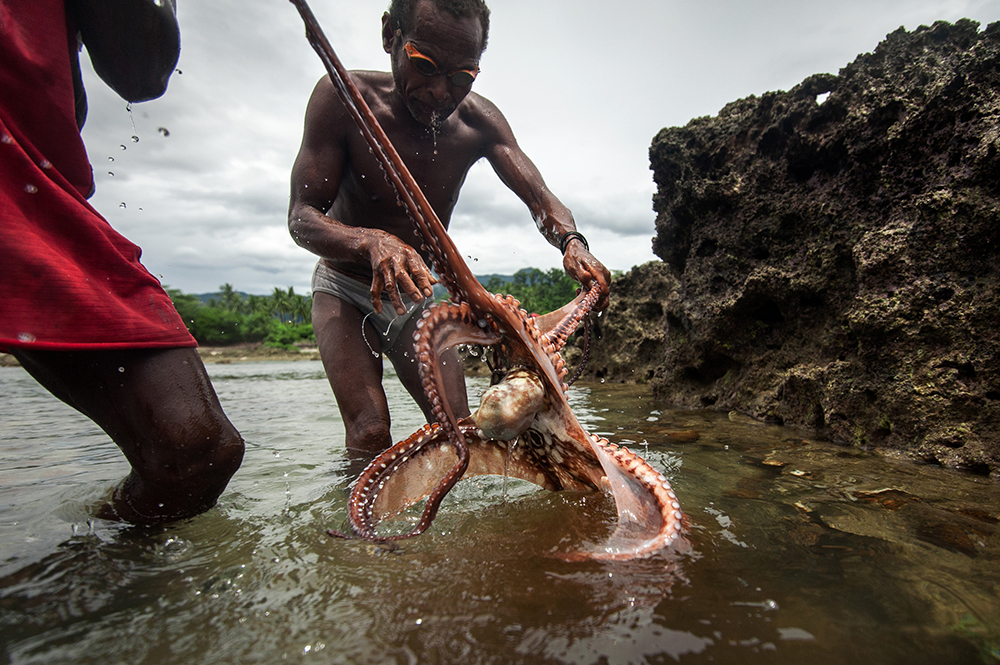
©Jacob Maentz, Two Agta men catch an octopus on the northeast coast of Isabela. The men use a metal spear to pierce the octopus hiding in the rock and takes the two of them to pull it out. Agta are traditionally nomadic hunter-gatherers living in small temporary camps widely-scattered over several thousand square kilometers of dense rainforest in the Sierra Madre of eastern Luzon. (Isabela, Philippines)
Project Katutubong Pilipino
Project Katutubong Pilipino is a long-term documentary project with the aim of showcasing the beauty and depth of Philippine indigenous cultures, and highlighting the many environmental and social issues these groups are currently facing.
With 110 recognized indigenous groups in the Philippines, there is a depth of culture that makes this island nation extremely rich in human history, traditions, language, knowledge and ethnicity. These diverse groups of people populated and spread throughout the archipelago over a span of 30,000 years, creating thriving societies and distinct lifestyles. Throughout time and despite centuries of colonization and western influence, many of these indigenous groups managed to hold onto their cultures and ways of life, often through turmoil. Today, modernization is moving at an extremely fast pace, both socially and economically, which is accelerating change and influencing significantly the remaining indigenous groups of the archipelago. Change is inevitable, but it’s been happening without the conscious understanding of what is being lost and in most cases comes from external pressure, not from within the communities themselves. Because of this, Filipino indigenous groups are facing numerous social and land rights issues, and in general are being highly marginalized and neglected by society. – Jacob Maentz,
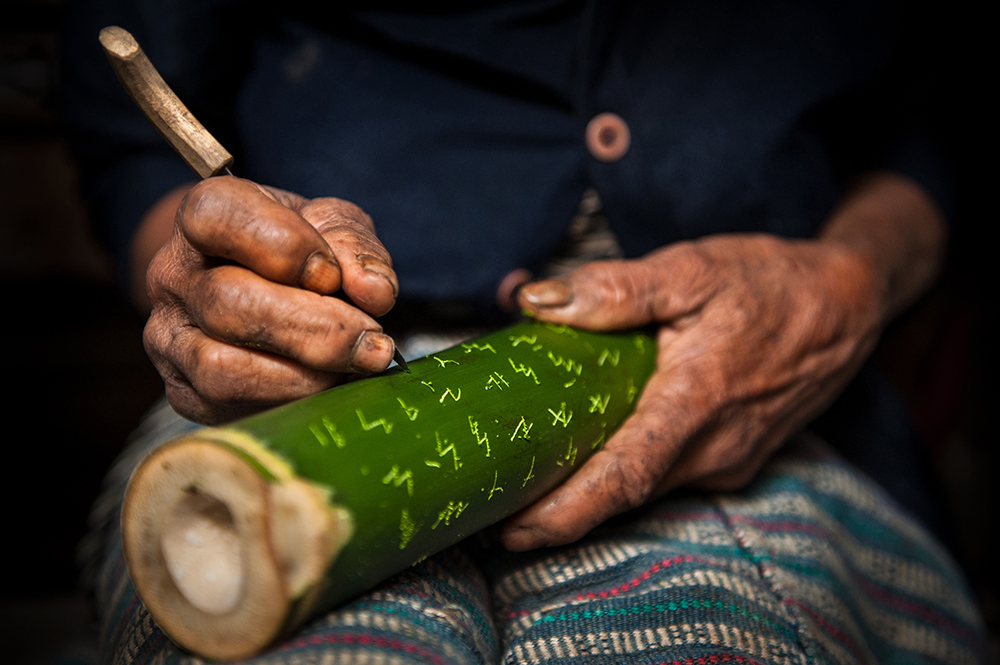
©Jacob Maentz, HanunÛío script is one of three indigenous scripts that is still being used today in the Philippines. The other two are the Buhid script (another Mangyan group) and the Tagbanua script in Palawan. This syllabic writing system, called Surat Mangyan is pre-Spanish and considered to be of Indic origin. Traditionally, the HanunÛío script was carved into fresh bamboo because paper was not readily available even 50 years ago. The HanunÛ\ío script was occasionally used to communicate between communities and individuals, however, the main use of the script is to write love letters or love poetry called ambahan. The script has been well preserved, but those who know how to write it from memory may soon be gone. The script is written from left to right, but is rotated 90-degrees counterclockwise when read. (Oriental Mindoro, Philippines)
Blue Earth Alliance is focused on partnering with photographers and filmmakers who educate the public about critical environmental and social issues. Founded in 1996 as a 501 (c) (3) non-profit organization by photographers Natalie Fobes and Phil Borges, Blue Earth Alliance supports visual storytellers through fiscal sponsorship and other resources. The organization extends tax-exempt status to photographers and filmmakers whose projects are accepted after an application and review process. Accepted projects are allowed to seek grants and tax-deductible donations under the sponsorship of Blue Earth Alliance. The next submission period will be in summer 2019. For more information, visit blueearth.org.
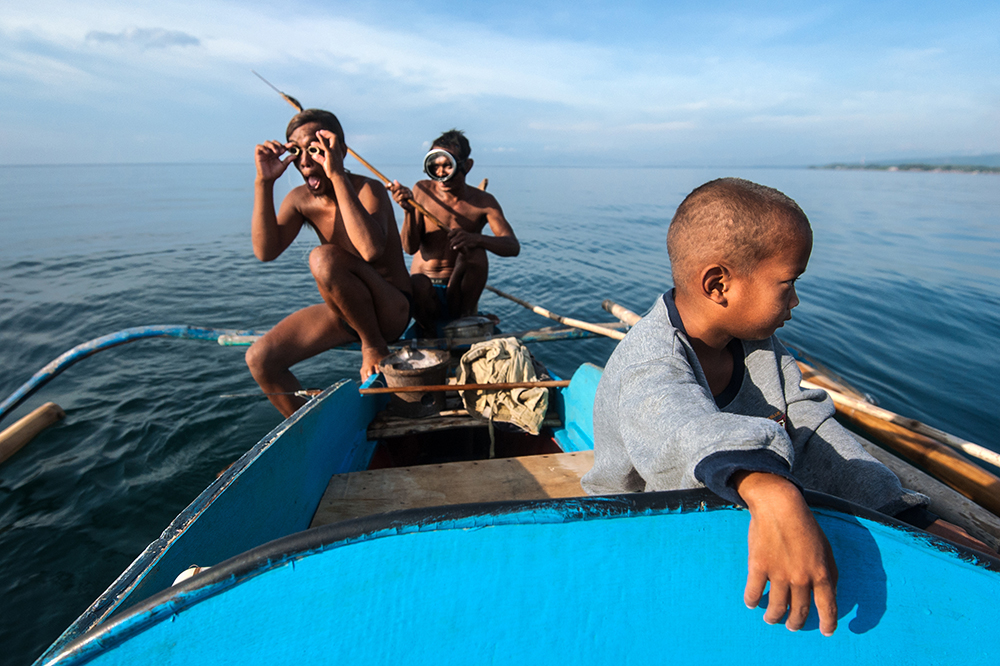
©Jacob Maentz, Nager, a Badjao fisherman, preparing to dive from his boat while his son waits onboard. Spearfishing in these waters takes a lot of time and concentration. Many of the larger fish have already been over-fished by more destructive means and it can take hours of effort to find small sized fish. Badjaos are noted for their exceptional abilities in free-diving, with physical adaptations that enable them to see better and dive longer underwater. Divers work long days with the ìgreatest daily apnea diving time reported in humansî of greater than 5 hours per day submerged. Some Badjaos intentionally rupture their eardrums at an early age in order to facilitate diving and hunting at sea. Many older Badjaos are therefore hard of hearing. (Davao del Sur, Mindanao, Philippines)
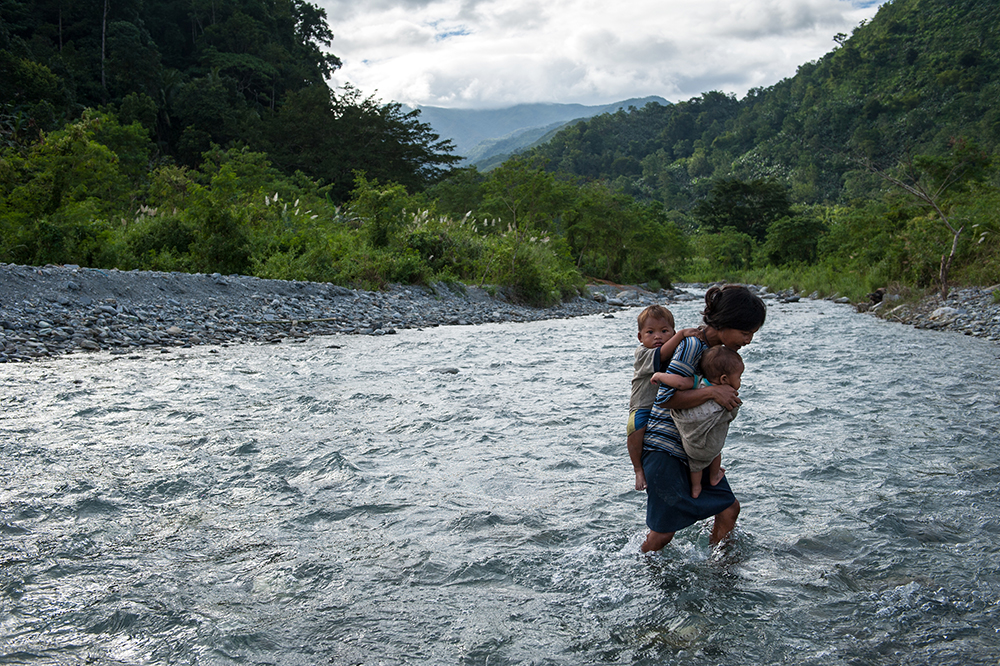
©Jacob Maentz, A Mangyan mother carrying her children across a small river in Mindoro. In the Bangon Mangyan culture, if a married man wants to leave his wife for another woman he simply has to pay his current wife a set amount of money. The man and woman will agree on a price, which isn\ít generally too much, and then the man can leave. It is a fairly common practice and many men in this community had two or three previous wives. Many children end up having a number of step brothers and sisters. (Oriental Mindoro, Philippines)
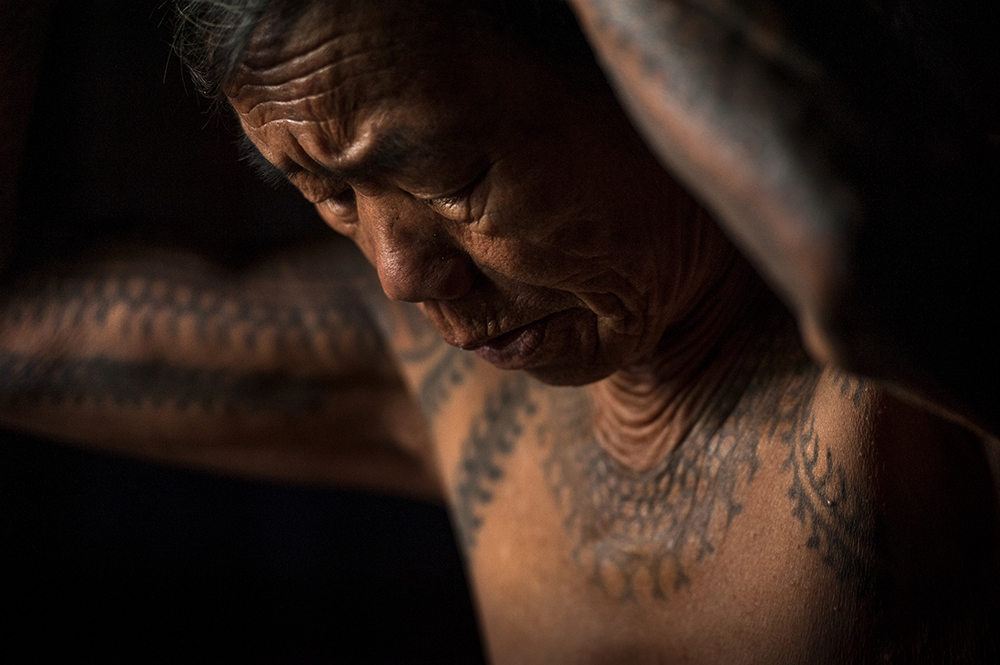
©Jacob Maentz, A tattooed Kalinga woman from the village of Buscalan. Tattoos in this region are used as a form of beautification and identity. Tattooing in the Cordilleras is a thousand year old ancient art once commonly practiced among the major warrior groups in the region. Men traditionally got tattooed as a rite of being a warrior or taking a head which was fairly common place up until the time of WWII. Today, it is difficult to find men who still have tattoos especially among the younger generation. One of the primary reasons for this is the belief that male tattoos should be hard-earned by revered warriors, which has mostly stopped since the demise of headhunting. Women on the other hand would get tattoos to beautify themselves, signify acceptance, and show the different stages of their life. Body tattoos on women served as permanent upper garment and each design has different interpretations and meanings. (Kalinga, Cordilleras, Philippines)
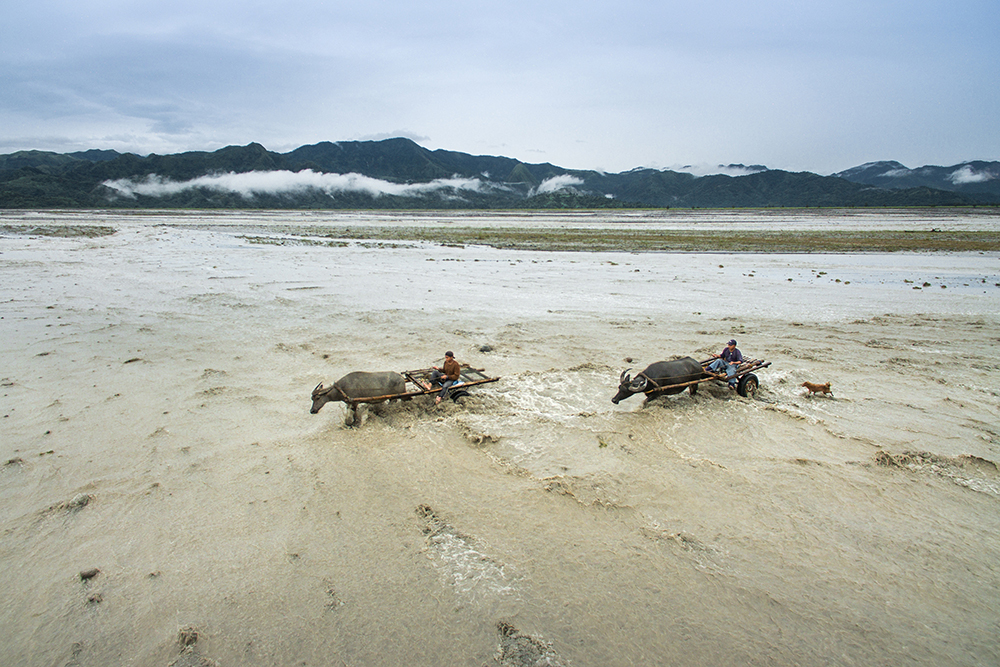
©Jacob Maentz, Two Aeta men cross a flooding river in Zambales with their carabao (water buffalo) carts. Carabao carts are the primary way goods are transported between indigenous Aeta villages and lowland communities in Zambales. During the rainy season river levels can raise very fast leaving Aeta villagers stranded for days due to the dangerous water levels. (Zambales, Philippines)
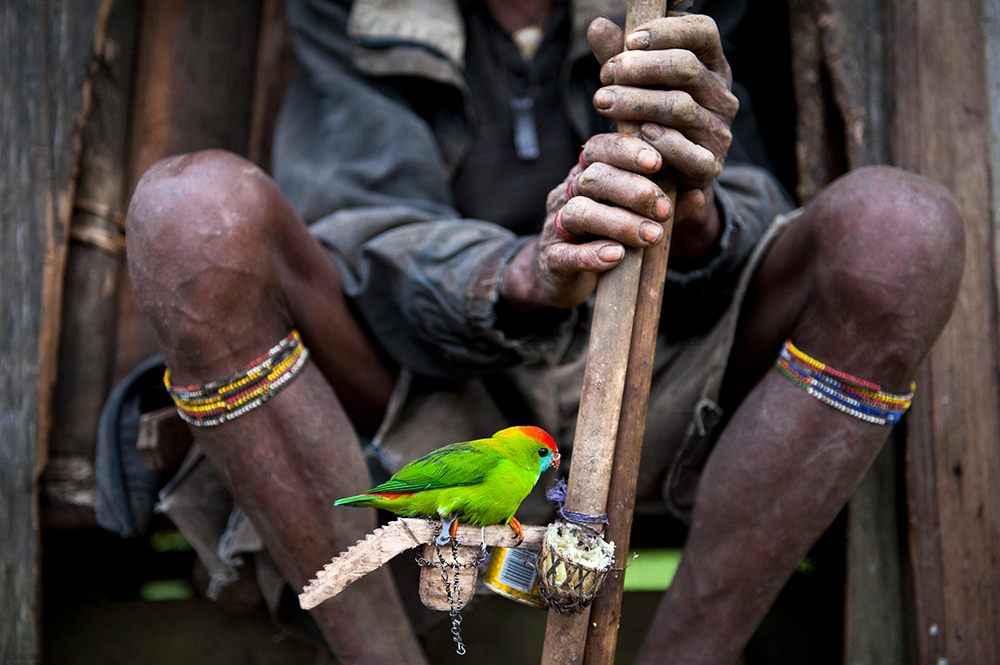
©Jacob Maentz, A source of income within this Manobo community is the live capture of forest birds. These birds are eventually sold to Visayan lowlanders who will likely display it in their homes. The men use a sticky resin on a wooden pole and allure birds in with camote roots. When the birds land on the sticky resin they are caught. A bird of this size is sold for roughly 100-200 pesos. Manobos and other Lumad groups have been sustainably utilizing their forest resources for thousands of years. Indigenous peoples are often faced with immense outside pressure or threats to exploit their natural resources, especially in areas of Mindanao. Individuals or companies will lie or make threats to tribal Datus to obtain signatures to log their forests. Likewise, many groups are being displaced from their ancestral lands which are being militarized in order to pave the way for development projects imposed on their communities. Murders are common against those leaders or advocates who speak out about the exploitation. (Bukidnon, Mindanao, Philippines)
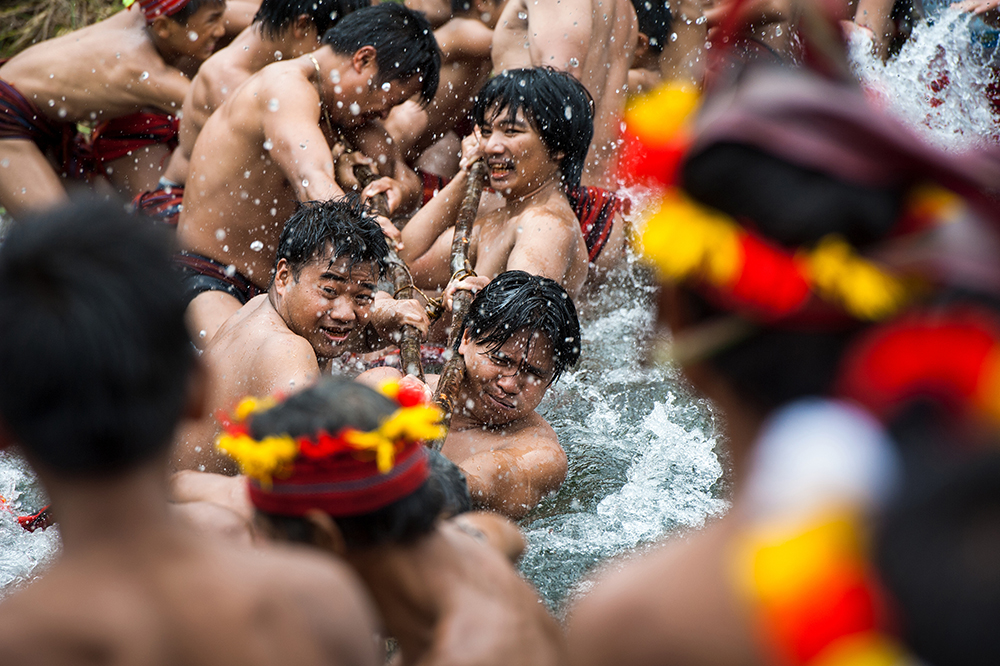
©Jacob Maentz, Every year in the Cordillera mountains of Luzon a ritual is held to celebrate the end of the rice harvest season. Over a two day period, three barangays gather to give thanks and blessings of post harvest with the celebration culminating in a ìpunnukî (tug-of-war) which is held in a river flowing through the heritage rice terraces. Throughout the two day period all processes are performed by a ìritual specialist,î a person ordained specifically to administer the various blessings required. The first day known as ìhuwahî proceeds at the house of a prominent elder who will receive other respected members of the community and guests to partake in the drinking of a rice wine especially fermented for this event (the rice harvest blessing). Before and during the opening of the wine the ritual specialist will conduct a blessing which takes the form of verbal chanting. The blessing involves five areas of tribal spiritual beliefs that need to be satisfied for the post harvest. The following day the punnuk takes place in the river ñ as a means of cleansing the soul and spirit with organic figurines being offered to the river as a means of thanksgiving. The event is a time for the whole community to come together in unity to celebrate. Three barangays challenge each other in the tug-of-war ritual with men, women & children partaking. Instead of rope two long sturdy branches known as a ìpakidî are interlocked & bound together. (Ifugao, Philippines)
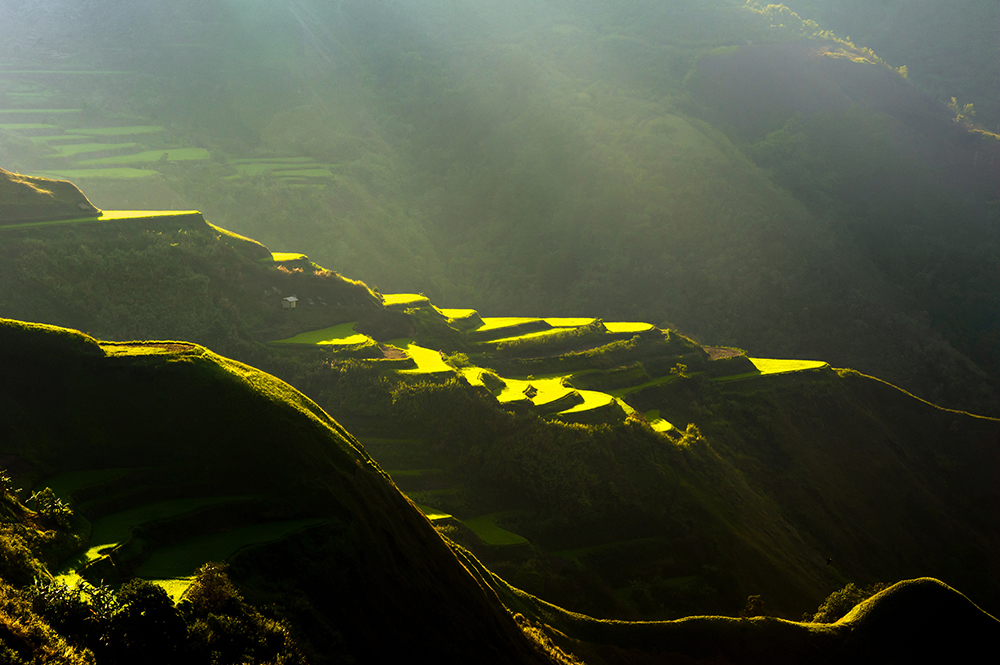
©Jacob Maentz, Much of the culture and life in the Cordilleras revolves around rice. From planting to harvest, each period represents a time that is honored and sacred in its own way. Rice is the staple crop for most of the indigenous groups in this region and they have built some of the biggest and most advanced rice terraces in the world. These terraces represent an ancient and sustainable system for communal rice production. To this day many of the tribes still practice thanksgiving rituals before planting and at harvest time. The Begnas ritual for the Kankanaey and the Bumayah for the Ifugao people are two examples of this. (Kalinga, Cordilleras, Philippines)
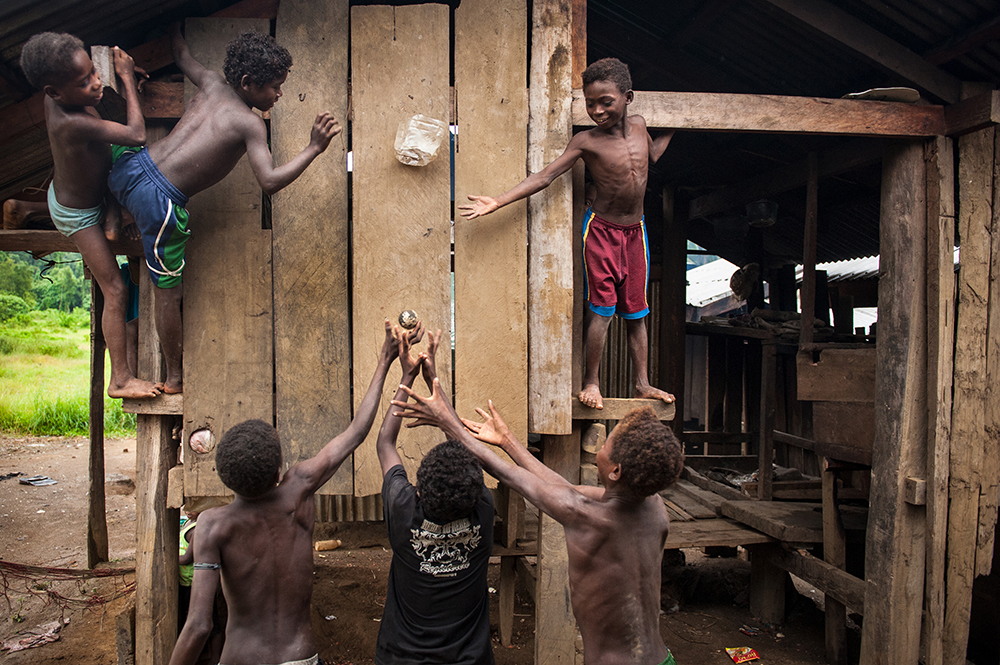
©Jacob Maentz, Agta children playing a game of basketball on the side of their home. Popular Filipino sports have been adopted by many indigenous groups, basketball being the most significant. In rural villages, children games such as holen (marbles), shatong (stick flinging) and sungkit-goma (rubber bands) are also commonly played. (Isabela, Philippines)

©Jacob Maentz, A young Sama-Bajau bride on her wedding day. Henna tattoos are placed on both the bride and grooms hands to signify their bond together. The tattoo design is created by the couple. It is customary for the Sama-Bajau to marry off young women when they come of age. (Tawi-Tawi, Philippines)
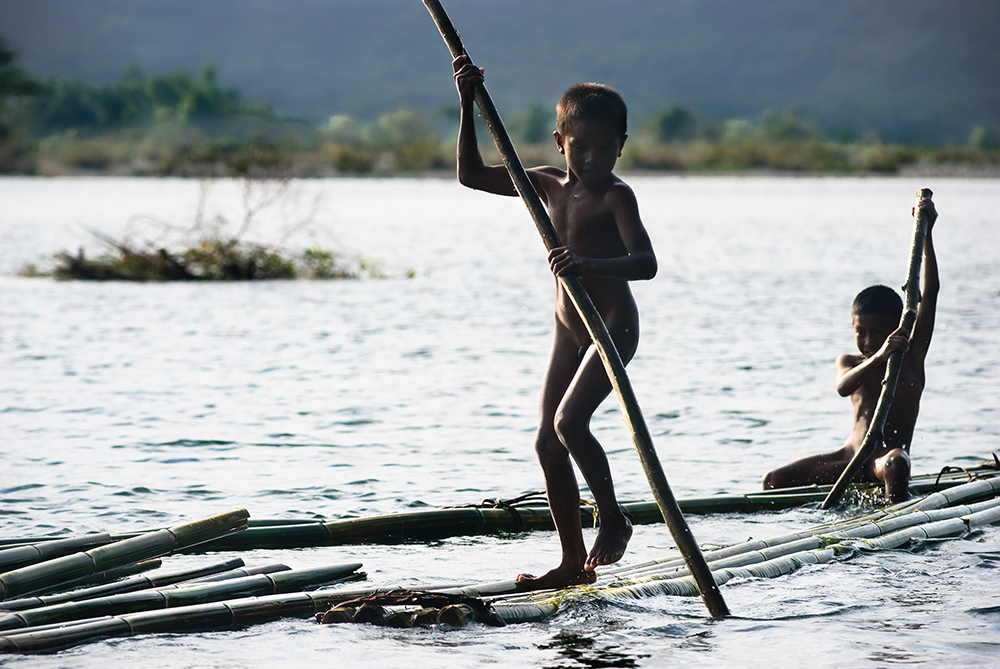
©Jacob Maentz, Two Ibanag boys using a bamboo raft on the Pinacanauan River, a tributary of the Cagayan River. The Ibanags are an ethnolinguistic minority numbering a little more than half a million people, who inhabit the provinces of Cagayan, Isabela and Nueva Vizcaya. They are one of the largest ethnolinguistic minorities in the Philippines and speak the same language under the same name. Ibanag is also known as ìYbanagî and ìYbanakî or ìIbanakî and is derived from the Cagayan River\ís ancient name, Bannag. (Cagayan, Philippines)
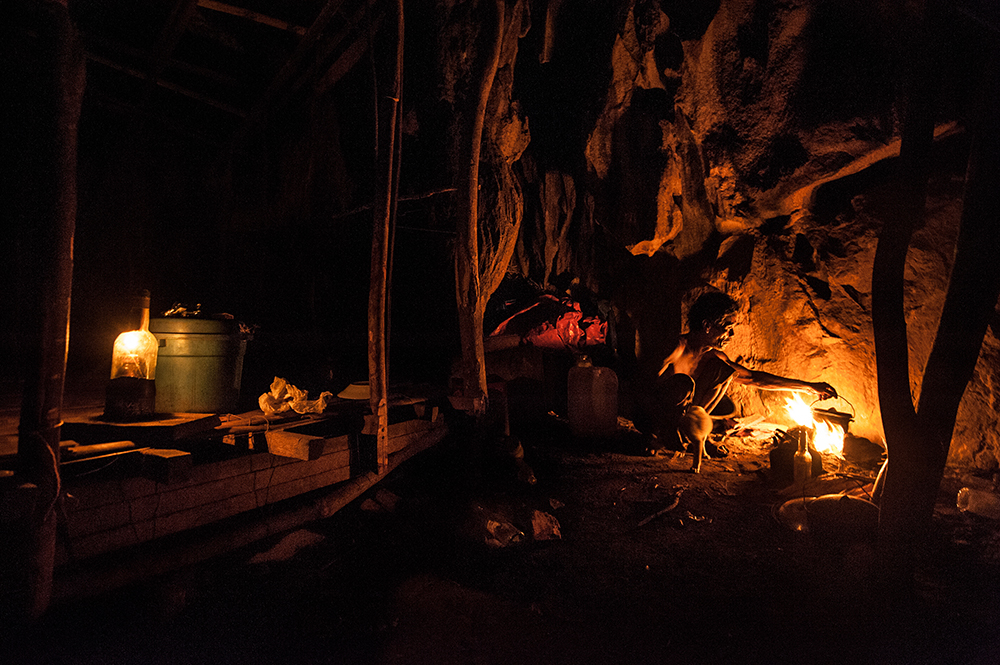
©Jacob Maentz, A Tagbanua man cooks dinner in his home over an open fire on Coron Island. Many of the Tagbanua homes on Coron Island are built using native materials against the limestone cliffs or on the beach. Cooking over an open fire is the most common, and usually the only way to prepare food in most villages. Even in more urban areas where gas stoves can be used, open fire cooking is the preferred method. Gathering firewood is usually a daily chore done by all members of a family. (Palawan, Coron, Philippines)
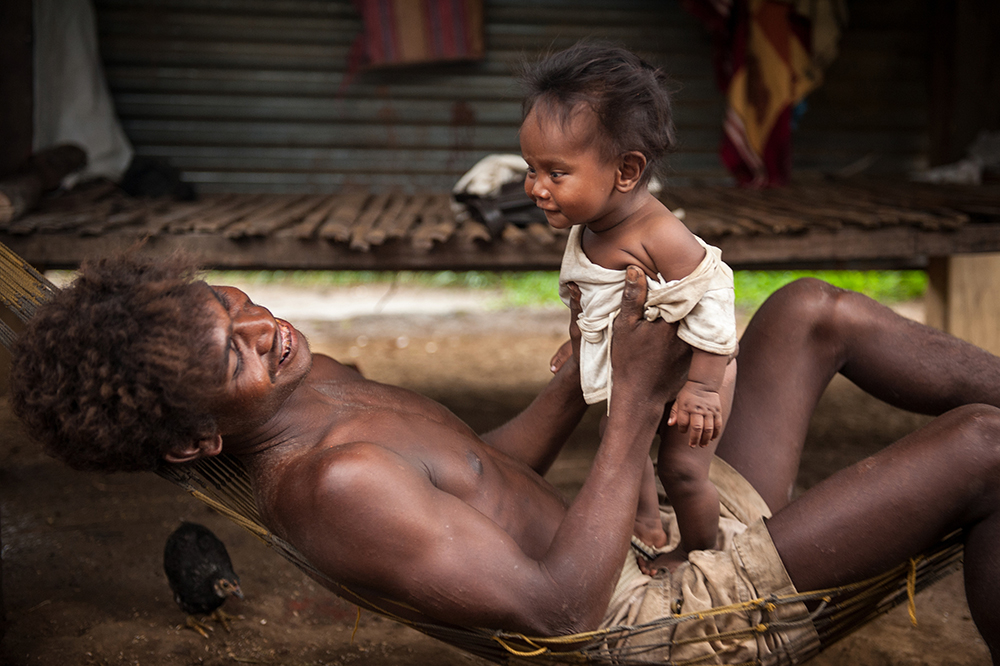
©Jacob Maentz, An Agta father taking time to look after his child while waiting for the rain to clear. Typically, there are very defined roles for men and women within the many indigenous groups throughout the archipelago. Women tend to be the caretakers of their young children while men are often the ones making a living or gathering food for the family. (Isabela, Philippines)
Posts on Lenscratch may not be reproduced without the permission of the Lenscratch staff and the photographer.
Recommended
-
Shinichiro Nagasawa: The Bonin IslandersApril 2nd, 2024
-
The International Women in Photo Association Awards: Lorraine Turci: The Resilience of the CrowMarch 16th, 2024
-
The International Women in Photo Association Awards: Rayito Flores Pelcastre: Chirping of CricketsMarch 14th, 2024
-
The International Women in Photo Association Awards: Louise Amelie: What Does Migration Mean for those who Stay BehindMarch 12th, 2024
-
Brandon Tauszik: Fifteen VaultsMarch 3rd, 2024




























































